The choice of high-quality hard disk on external signs
Some time ago I had to choose a large-capacity hard drive.
After the well-known events in Thailand with the flooding of the production capacity of manufacturers of component hard drives, and the subsequent rise in prices for them, the problem of choosing such an expensive device has become even more urgent.
I chose the hard drives of one of the well-known manufacturers. For the purpose of “political correctness”, the disc brand is not advertised.
Before the purchase, specialized forums were studied, and everywhere experienced participants pointed out that these hard drives have two main assembling regions - China and Korea, and the reviews about Chinese-made disks are not very good.
')
Finally, the hard drive is purchased and ready for inspection.
I was already the owner of 1.5 TB HDD of exactly the same brand that was produced (judging by the label) in Korea. A new purchased disc was produced in China: the order was made in the online store, so it was impossible to see and touch the goods before buying.
Under the cat - an overview of the differences in the quality of the Chinese and Korean assemblies of the same brand HDD, with tips and tricks on how to choose a quality hard drive, focusing on external signs. (Attention, many photos).
One of the experts involved in repairing hard drives has already written about one of the signs of an un-original assembly , and what is recommended to pay attention to - the presence of air bubbles under the sticker, uneven labeling. In our test samples, this is not the case with the Chinese,
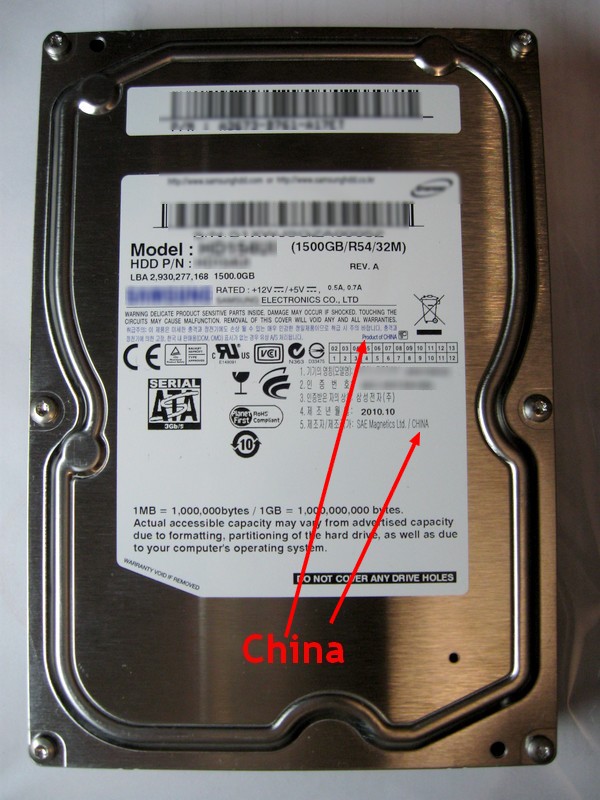
Nor in the case of the Korean copy. The labels are even and there are no signs of bloating and bubbles:
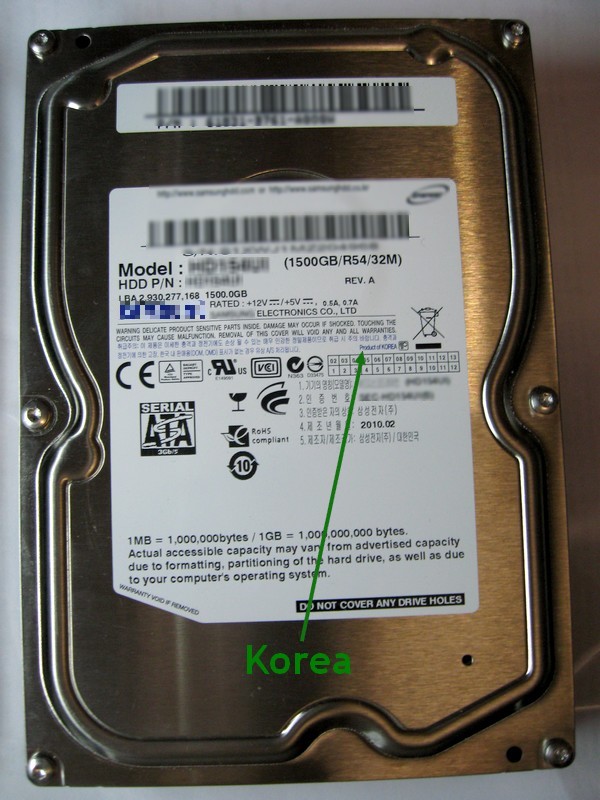
Go ahead.
The first thing that catches the eye from the back of the disks is the irregularities, abrasions and notches on the frame of the Chinese copy:
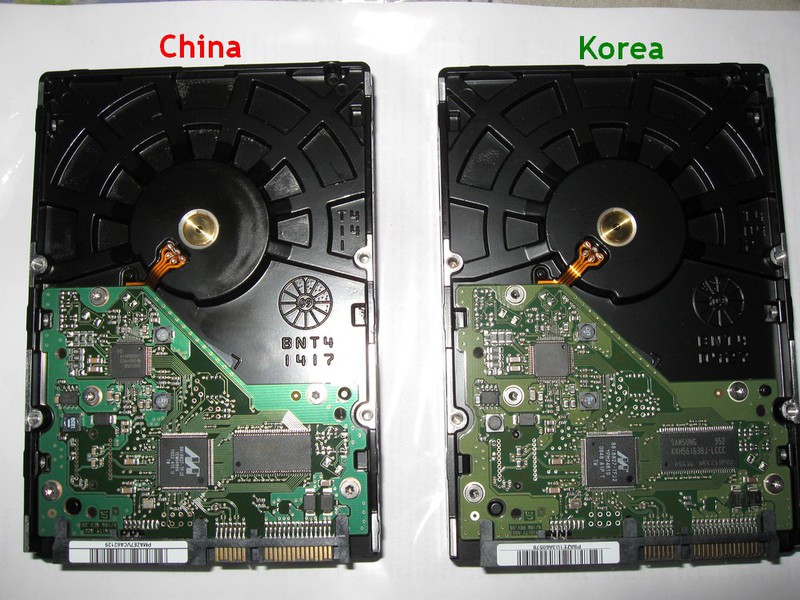
Indeed, the processing of the mounting location of the spindle of the Chinese disk does not look very good,
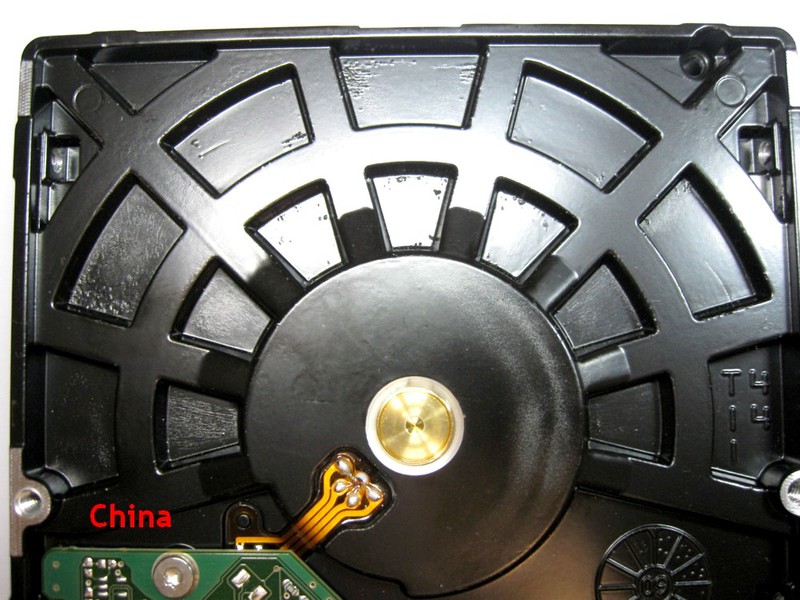
compared to the Korean copy:

At a slight angle this is even better seen. Worn surface "Chinese"

against the polished surface of a Korean copy:

In the Chinese copy, an ESMT chip is used as a memory chip. This may seem a bit strange, since the manufacturer of HDD itself is a manufacturer of similar chips (but as they say on the forums, everything is logical - ESMT chips are of lower quality and are cheaper). The plots on the board are poorly treated (the dull hue of the pads indicates this)

In the Korean version, a native memory chip is used as a memory chip. The quality of tinning sites also differs for the better (the solder is evenly distributed around the perimeter of each contact pad):
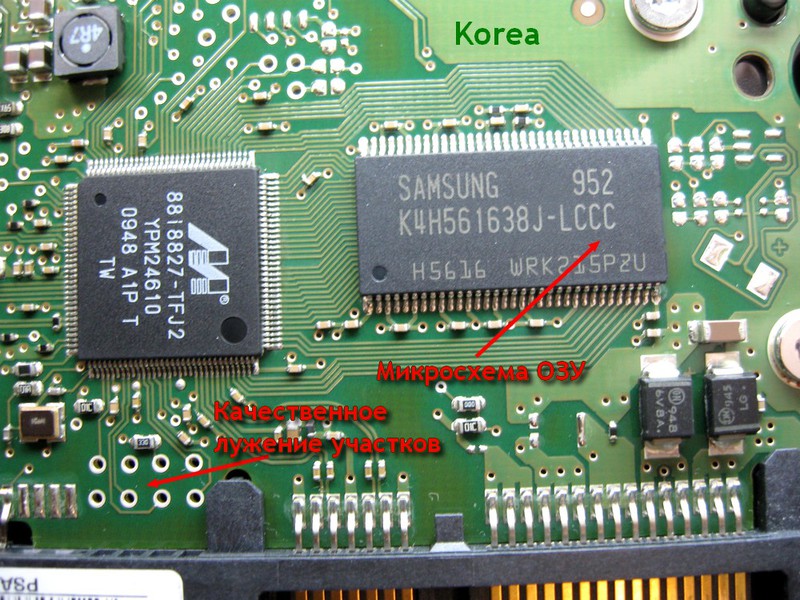
It is also worth noting that in the described models a vibration sensor is provided, but in both instances it is not decoupled (absent). Actually, I consider it even a plus: I came across disks with a soldered sensor, and which arbitrarily increased the value of the SMART parameter “Mechanical Shock” in huge limits, despite the fact that during this disk was fixed and was on a fixed concrete slab .
Back to the quality of tinning, it also says a lot. In the Chinese version, it is simply disgusting.
It is better to try not to take such a disk, because Subsequently, such savings can lead to difficult problems - the absence and periodic loss of electrical contact, etc.
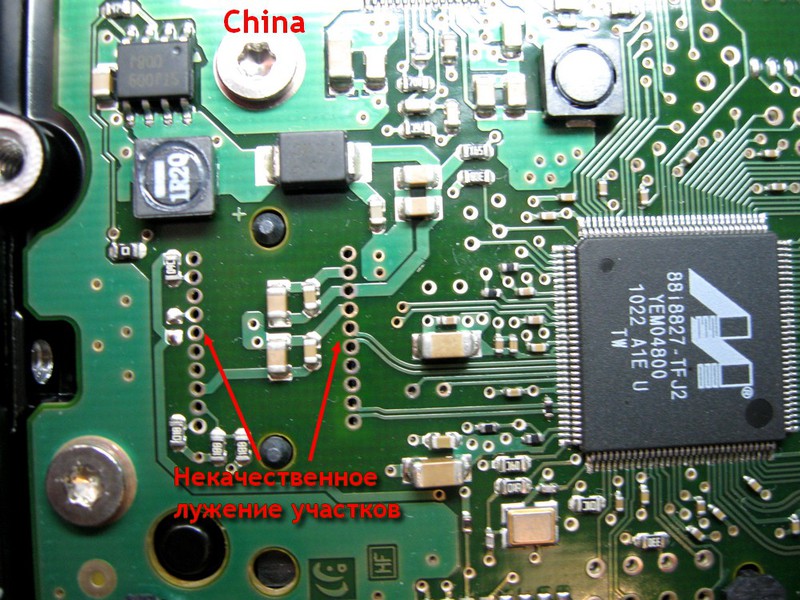
In addition, all modern printed circuit boards of complex devices are double-sided and, often, multi-layered, with metallization - this means that the contact goes from one side of the board to another layer or side of the board. And poor-quality metallization can also cause problems.
In the Korean version of the board looks just fine:

Even such, at first glance, trifle, as connectors - is also different.
In the Korean assembly, there are chamfers at the ends of the contacts — for less wear on the mating part of the connector.
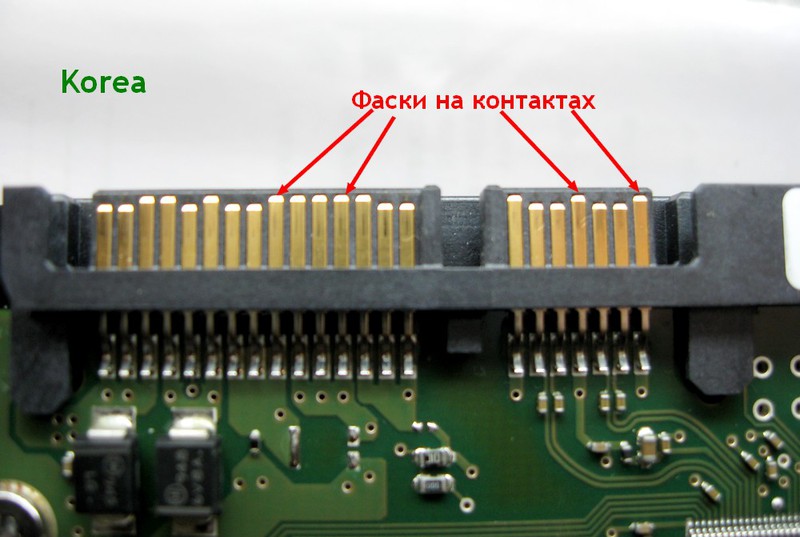
In the Chinese version of such excesses did not even think:
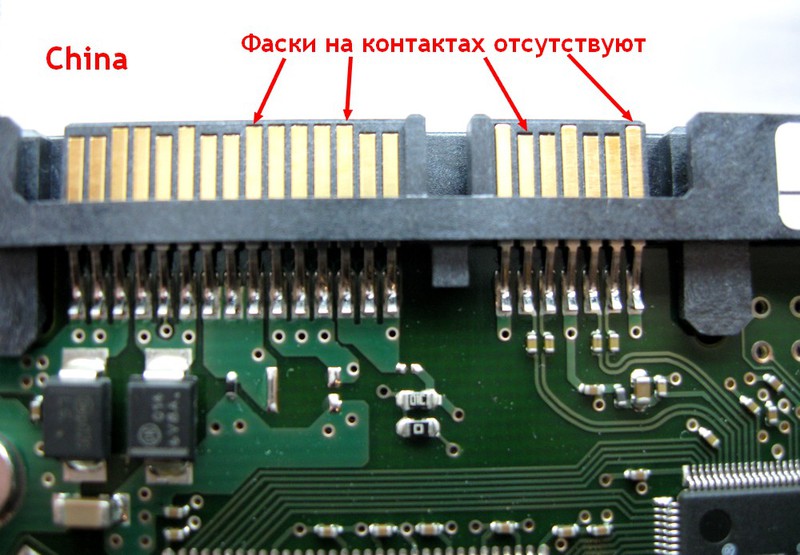
As a result, the purchased Chinese-made disc (after a couple of inclusions) already had a pair of reassigned sectors and bad blocks, which, together with the shortcomings described above, made it possible to return it and change it under warranty for a similar, but already Korean, assembly.
I don’t want to say that Chinese-made hard disks are completely poor-quality, but paying attention to the details when choosing will not be superfluous, and, of course: even a high-quality selection of a hard disk doesn’t guarantee that everything will be fine inside this disk. But to reduce the likelihood of disk failure will certainly help.
I wish you successful purchases, only high-quality goods!

After the well-known events in Thailand with the flooding of the production capacity of manufacturers of component hard drives, and the subsequent rise in prices for them, the problem of choosing such an expensive device has become even more urgent.
I chose the hard drives of one of the well-known manufacturers. For the purpose of “political correctness”, the disc brand is not advertised.
Before the purchase, specialized forums were studied, and everywhere experienced participants pointed out that these hard drives have two main assembling regions - China and Korea, and the reviews about Chinese-made disks are not very good.
')
Finally, the hard drive is purchased and ready for inspection.
I was already the owner of 1.5 TB HDD of exactly the same brand that was produced (judging by the label) in Korea. A new purchased disc was produced in China: the order was made in the online store, so it was impossible to see and touch the goods before buying.
Under the cat - an overview of the differences in the quality of the Chinese and Korean assemblies of the same brand HDD, with tips and tricks on how to choose a quality hard drive, focusing on external signs. (Attention, many photos).
One of the experts involved in repairing hard drives has already written about one of the signs of an un-original assembly , and what is recommended to pay attention to - the presence of air bubbles under the sticker, uneven labeling. In our test samples, this is not the case with the Chinese,

Nor in the case of the Korean copy. The labels are even and there are no signs of bloating and bubbles:

Go ahead.
The first thing that catches the eye from the back of the disks is the irregularities, abrasions and notches on the frame of the Chinese copy:

Indeed, the processing of the mounting location of the spindle of the Chinese disk does not look very good,

compared to the Korean copy:

At a slight angle this is even better seen. Worn surface "Chinese"

against the polished surface of a Korean copy:

In the Chinese copy, an ESMT chip is used as a memory chip. This may seem a bit strange, since the manufacturer of HDD itself is a manufacturer of similar chips (but as they say on the forums, everything is logical - ESMT chips are of lower quality and are cheaper). The plots on the board are poorly treated (the dull hue of the pads indicates this)

In the Korean version, a native memory chip is used as a memory chip. The quality of tinning sites also differs for the better (the solder is evenly distributed around the perimeter of each contact pad):

It is also worth noting that in the described models a vibration sensor is provided, but in both instances it is not decoupled (absent). Actually, I consider it even a plus: I came across disks with a soldered sensor, and which arbitrarily increased the value of the SMART parameter “Mechanical Shock” in huge limits, despite the fact that during this disk was fixed and was on a fixed concrete slab .
Back to the quality of tinning, it also says a lot. In the Chinese version, it is simply disgusting.
It is better to try not to take such a disk, because Subsequently, such savings can lead to difficult problems - the absence and periodic loss of electrical contact, etc.

In addition, all modern printed circuit boards of complex devices are double-sided and, often, multi-layered, with metallization - this means that the contact goes from one side of the board to another layer or side of the board. And poor-quality metallization can also cause problems.
In the Korean version of the board looks just fine:

Even such, at first glance, trifle, as connectors - is also different.
In the Korean assembly, there are chamfers at the ends of the contacts — for less wear on the mating part of the connector.

In the Chinese version of such excesses did not even think:

As a result, the purchased Chinese-made disc (after a couple of inclusions) already had a pair of reassigned sectors and bad blocks, which, together with the shortcomings described above, made it possible to return it and change it under warranty for a similar, but already Korean, assembly.
I don’t want to say that Chinese-made hard disks are completely poor-quality, but paying attention to the details when choosing will not be superfluous, and, of course: even a high-quality selection of a hard disk doesn’t guarantee that everything will be fine inside this disk. But to reduce the likelihood of disk failure will certainly help.
I wish you successful purchases, only high-quality goods!

Source: https://habr.com/ru/post/145246/
All Articles